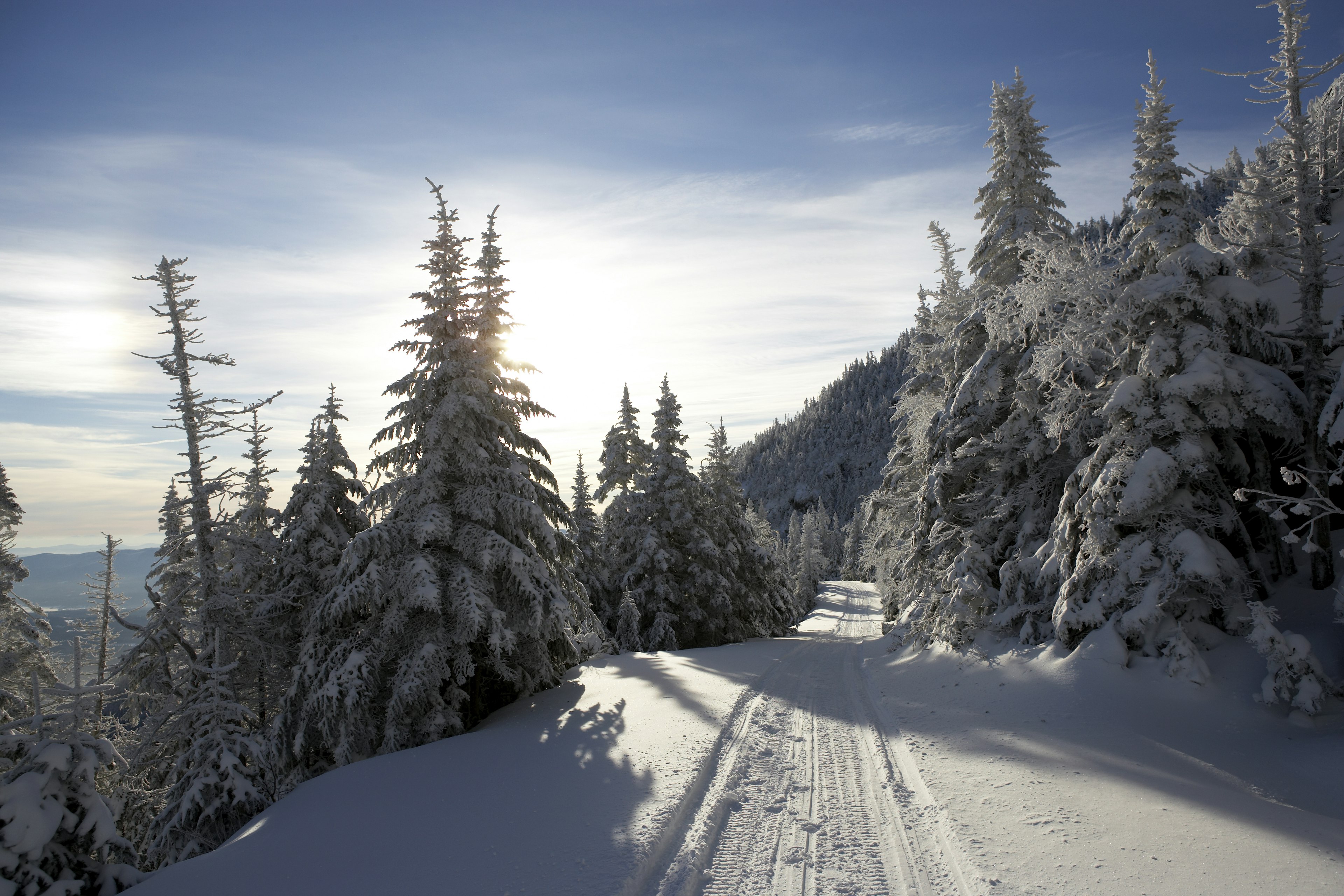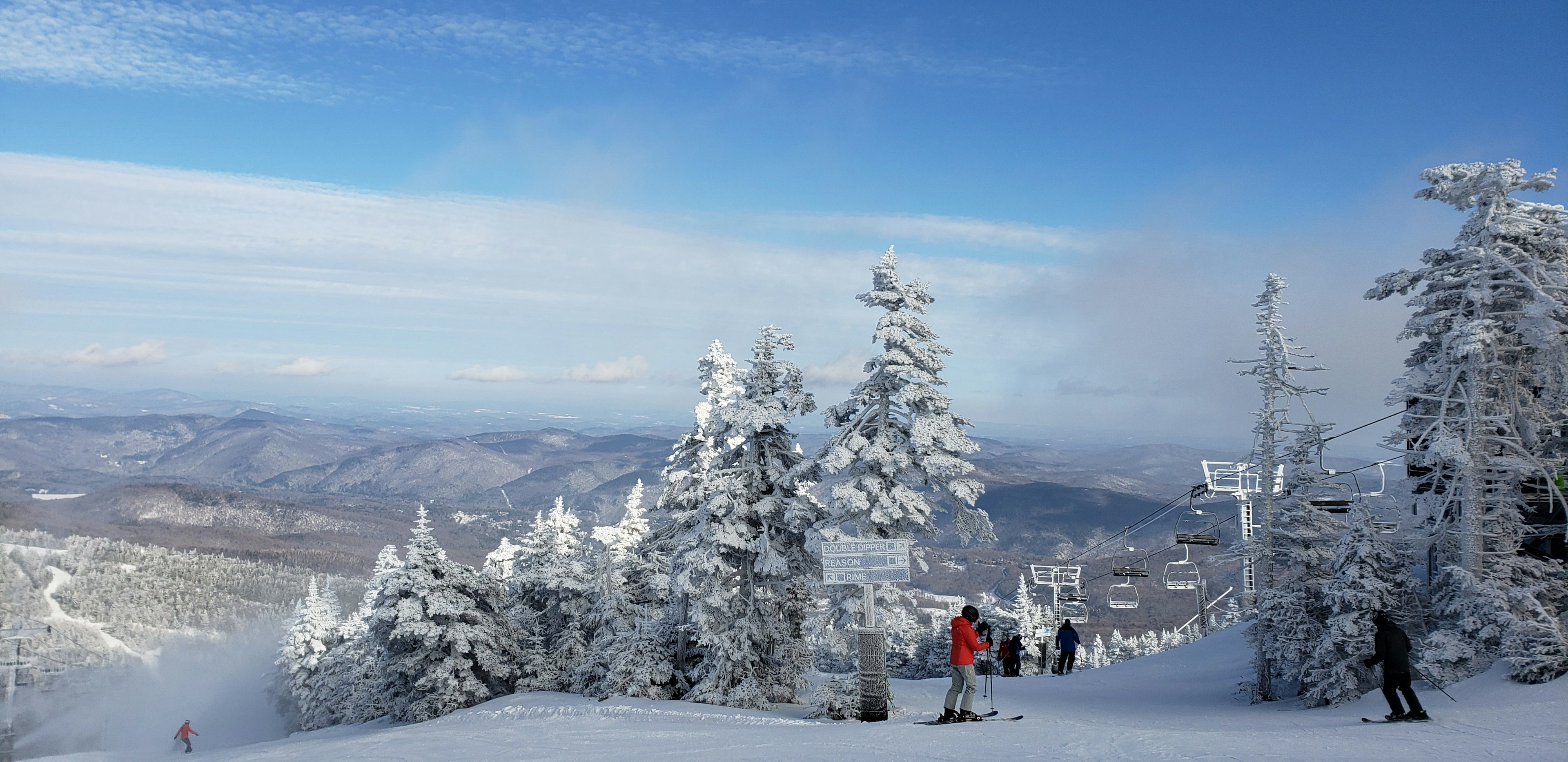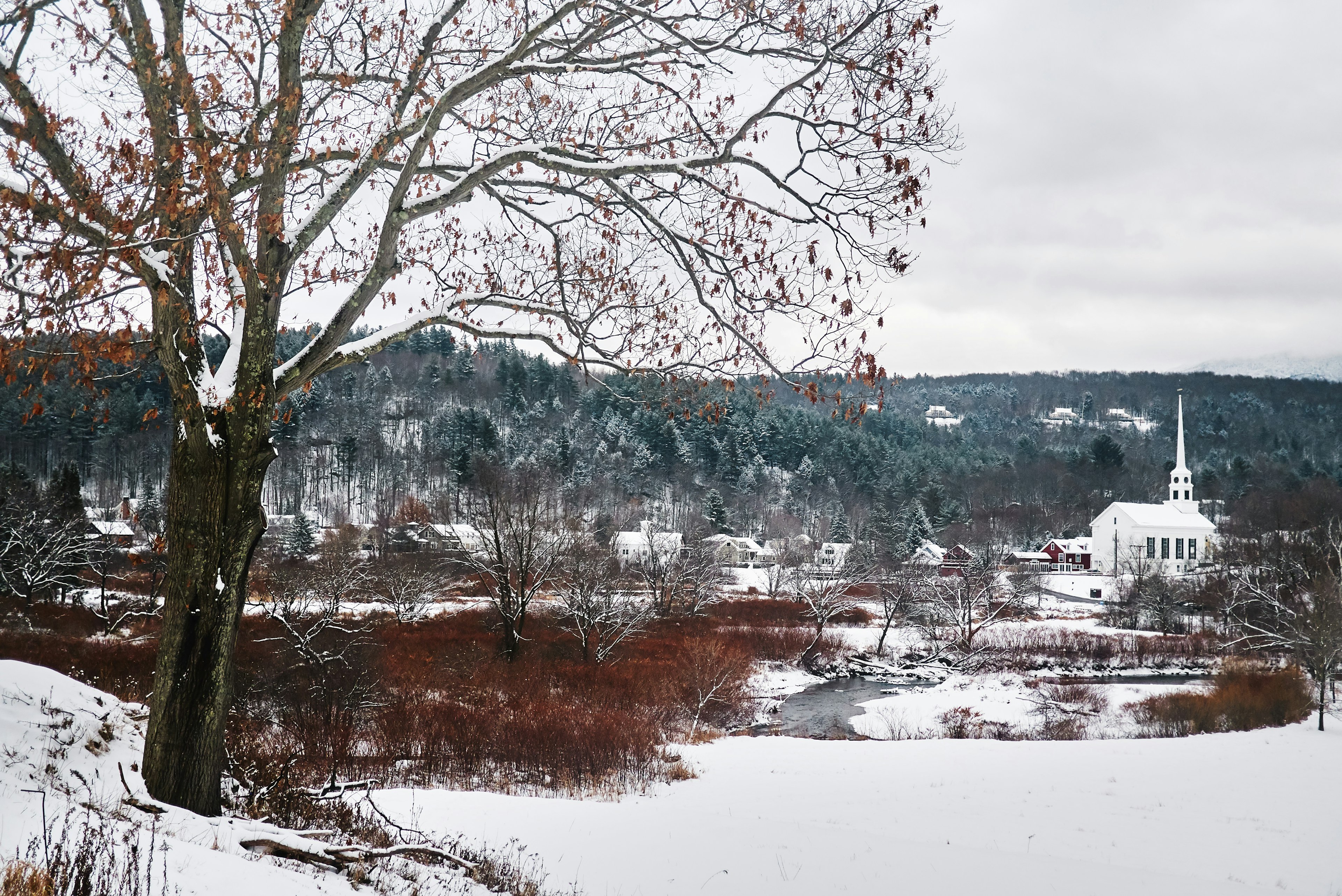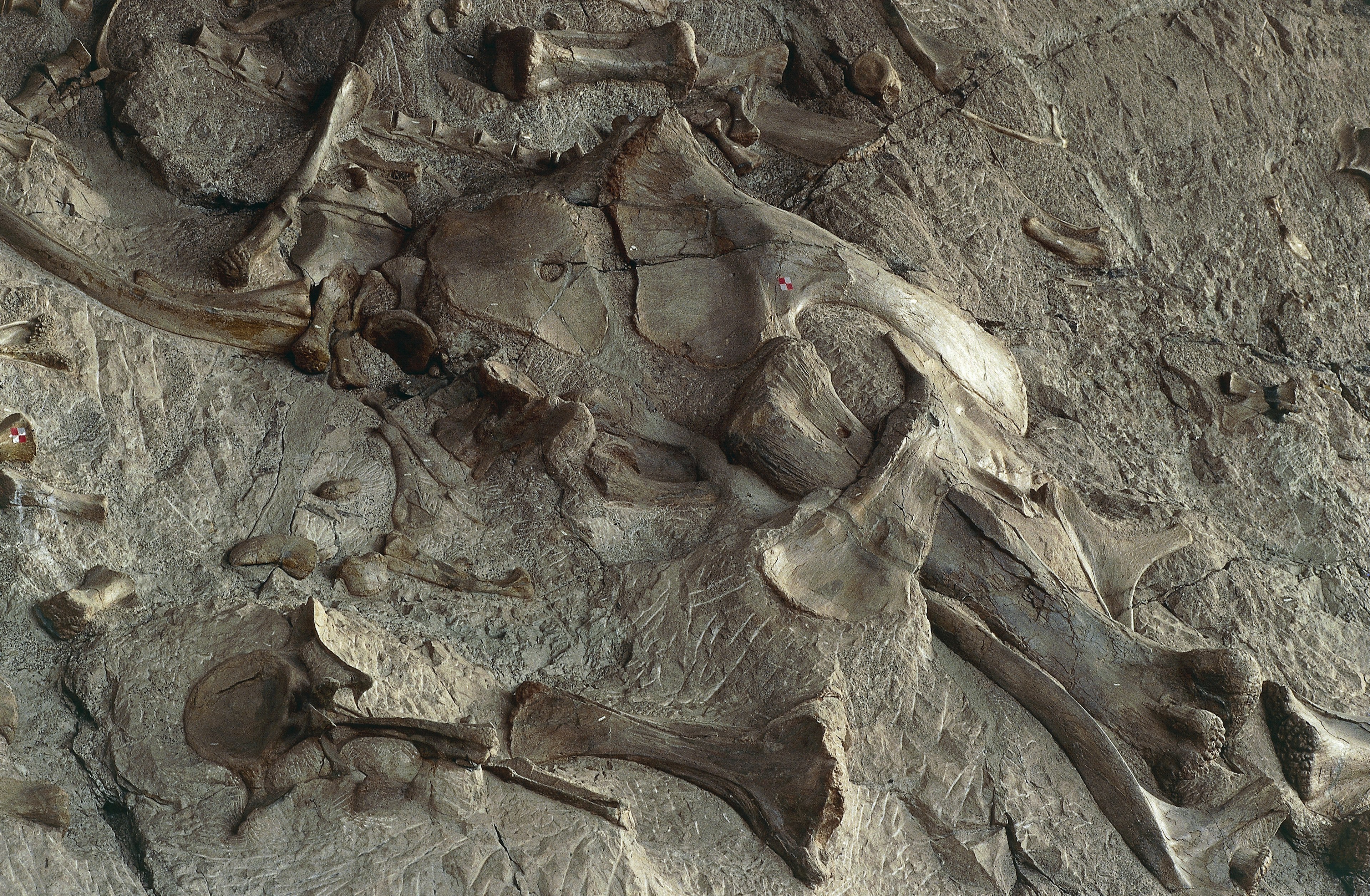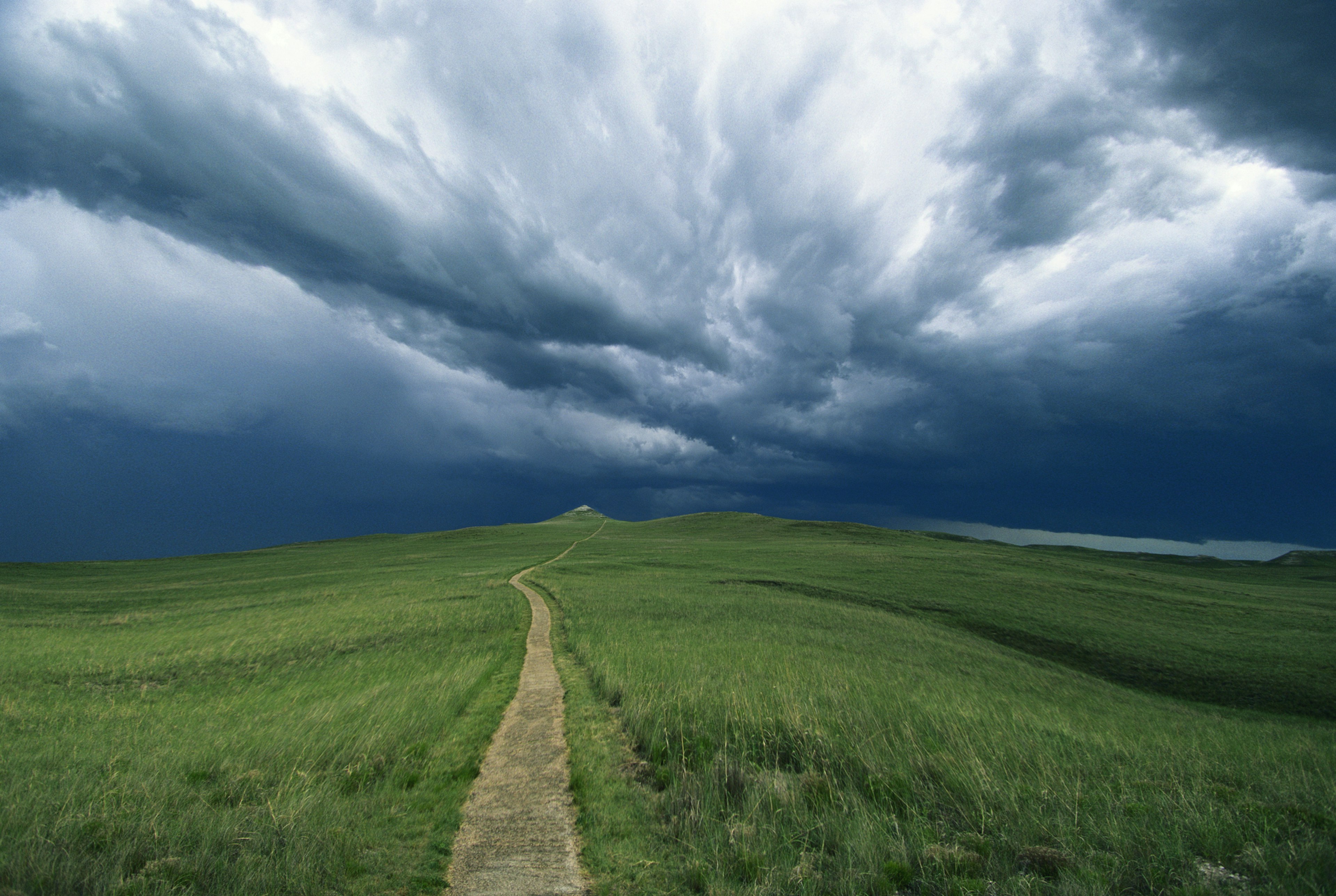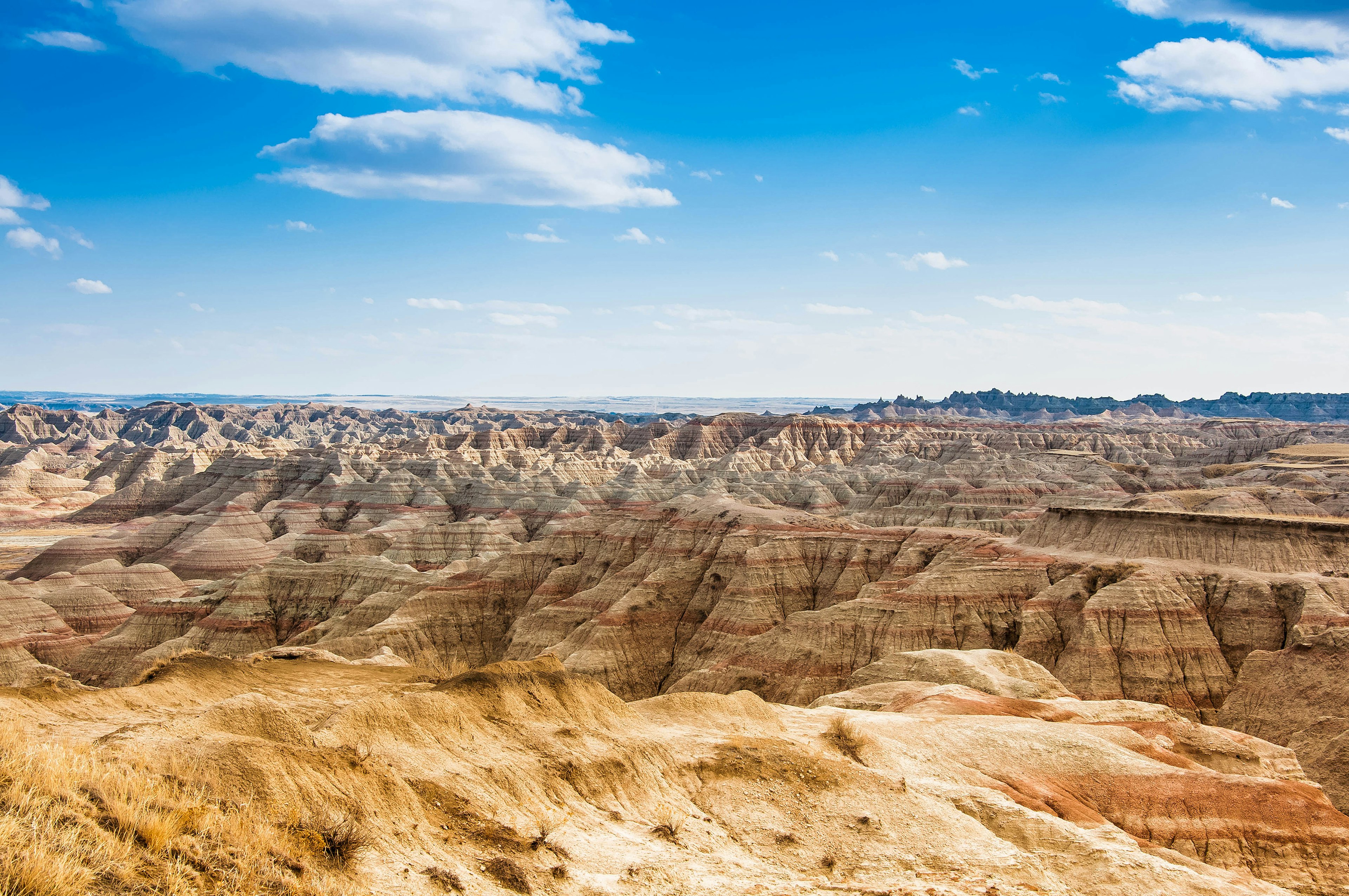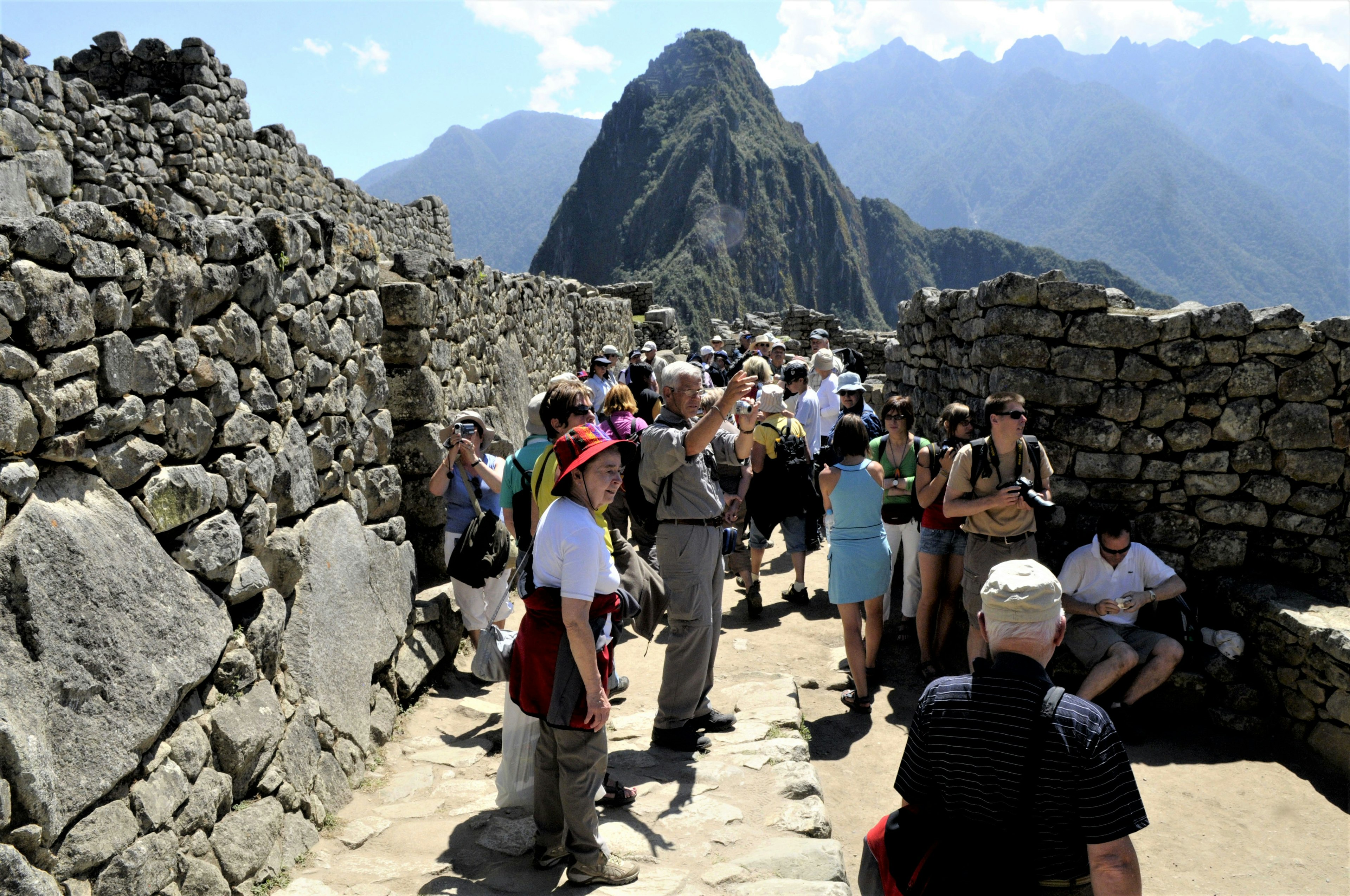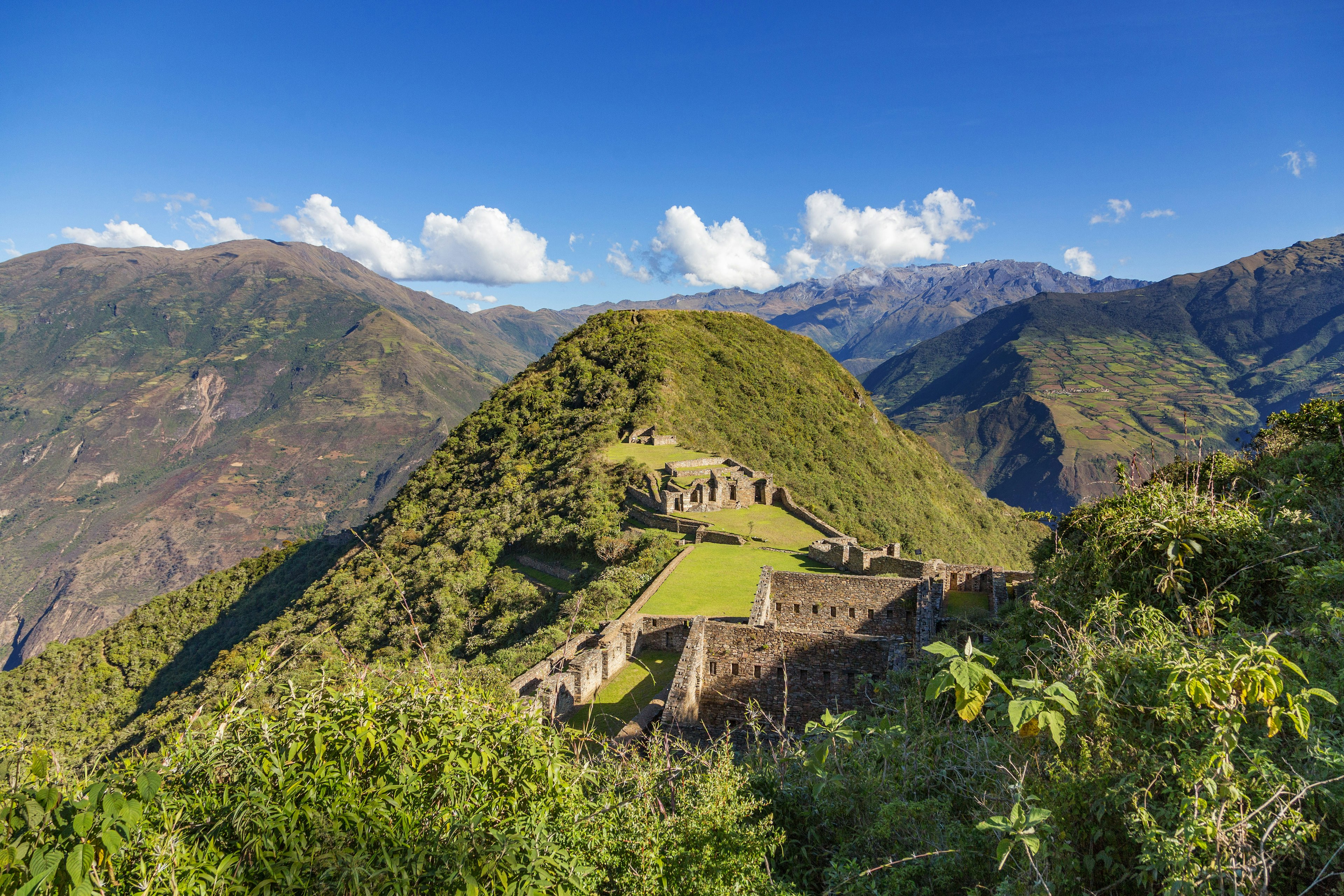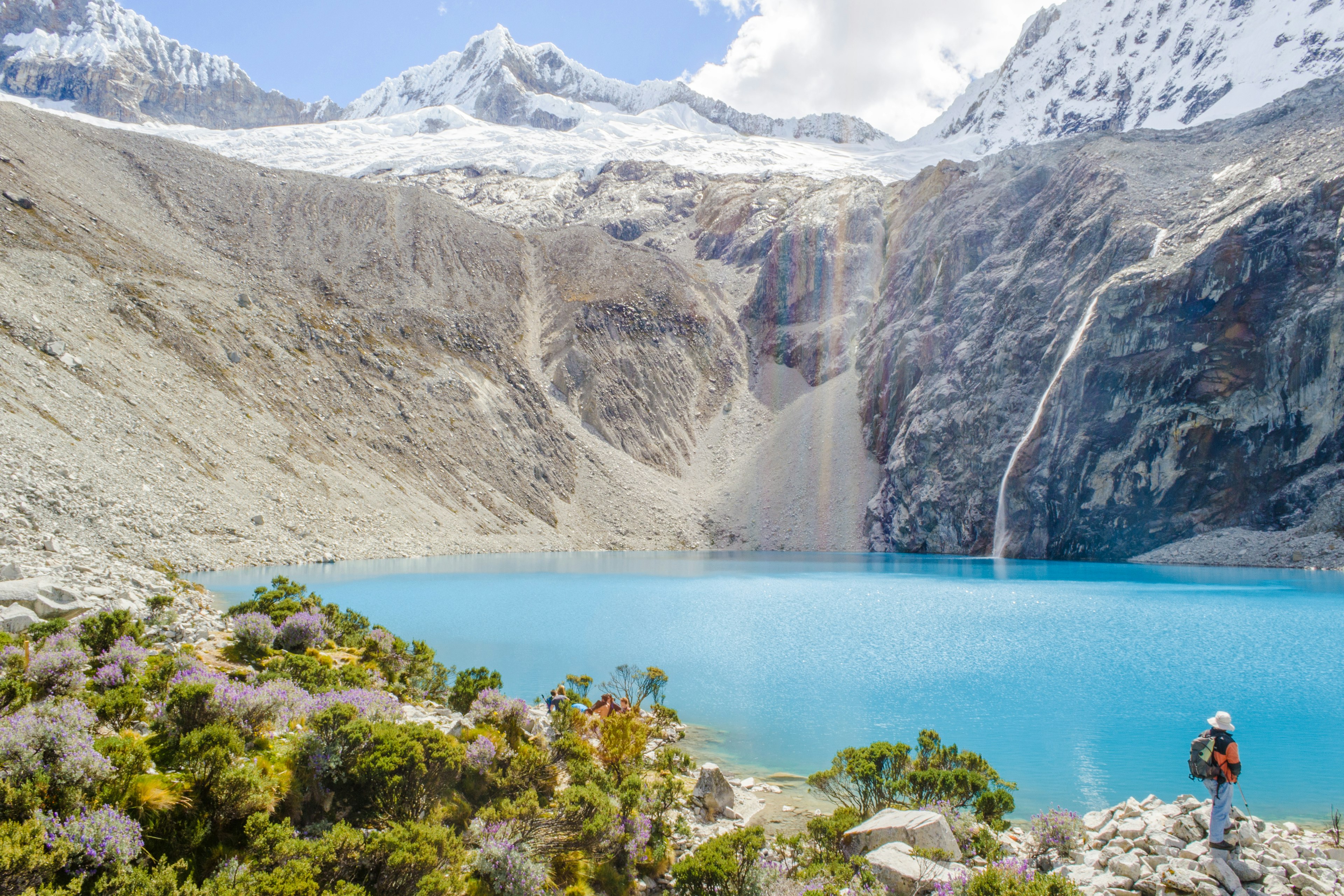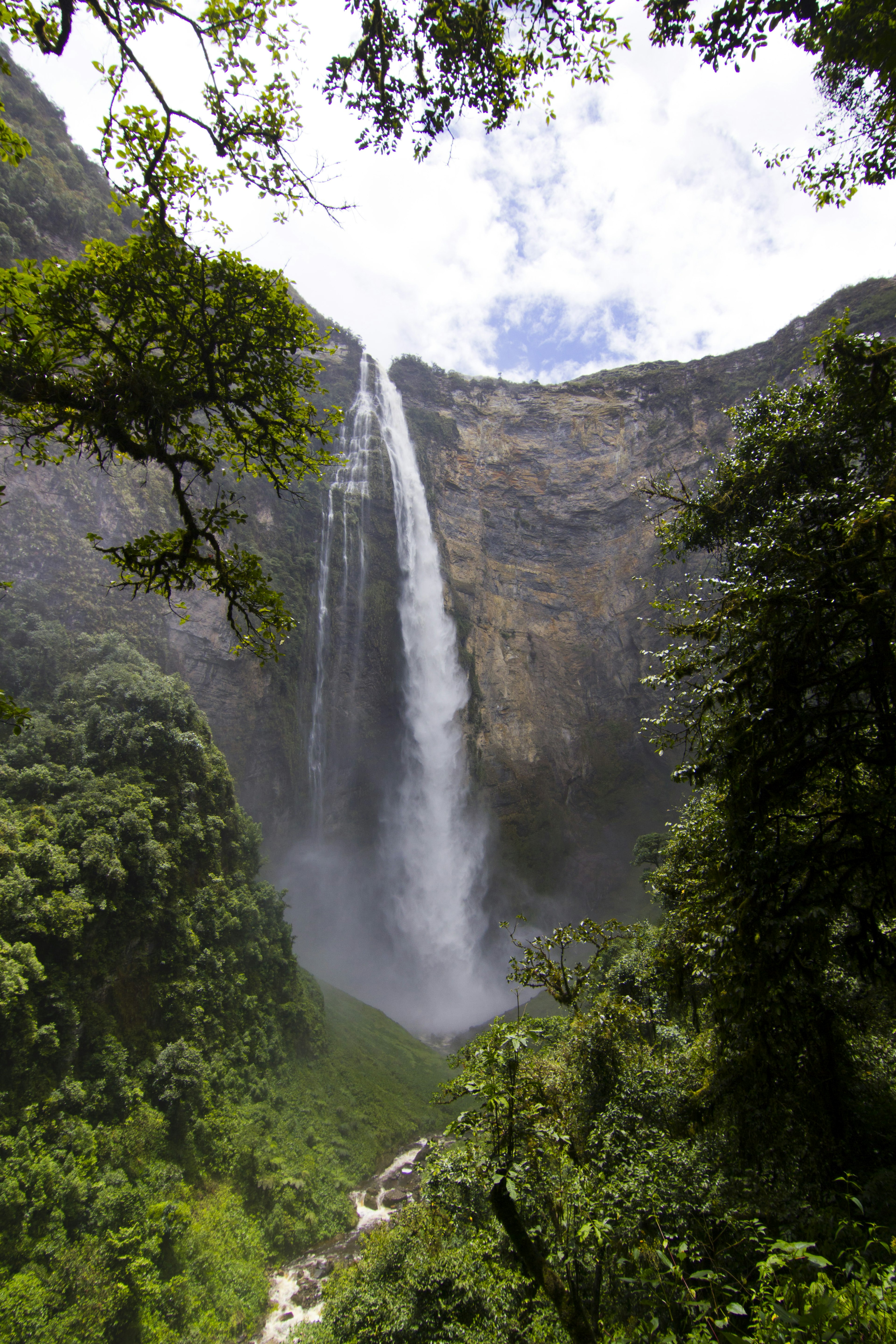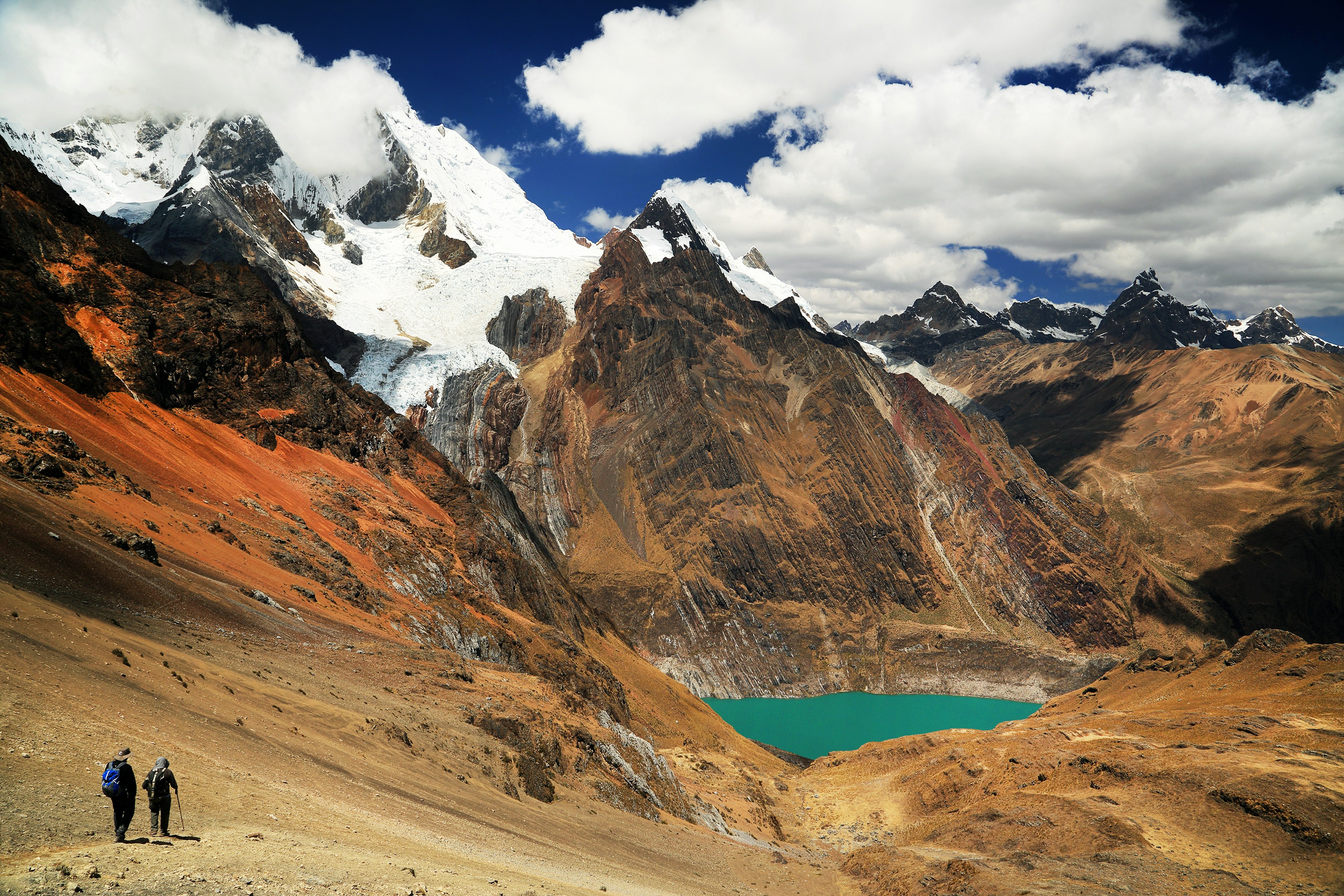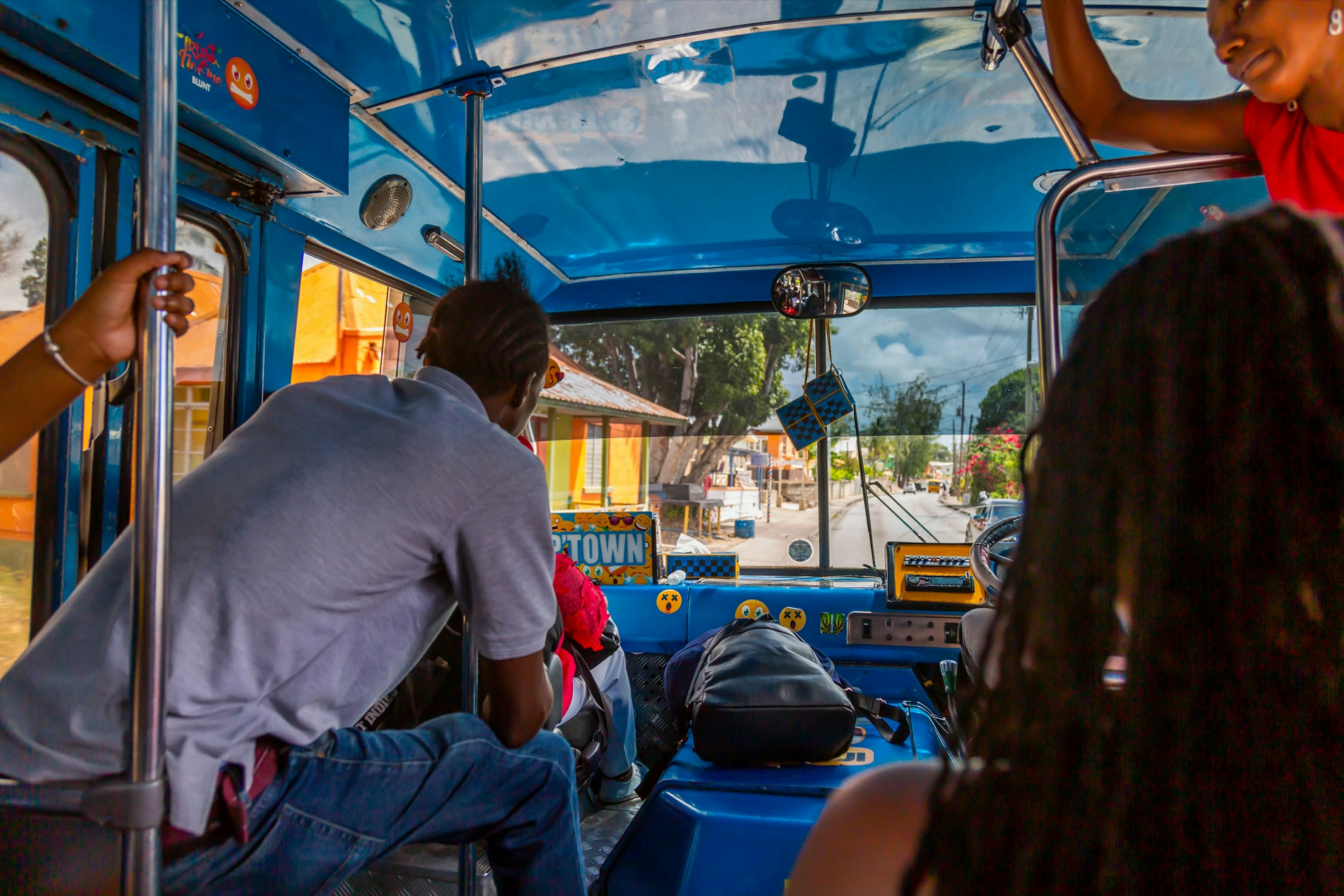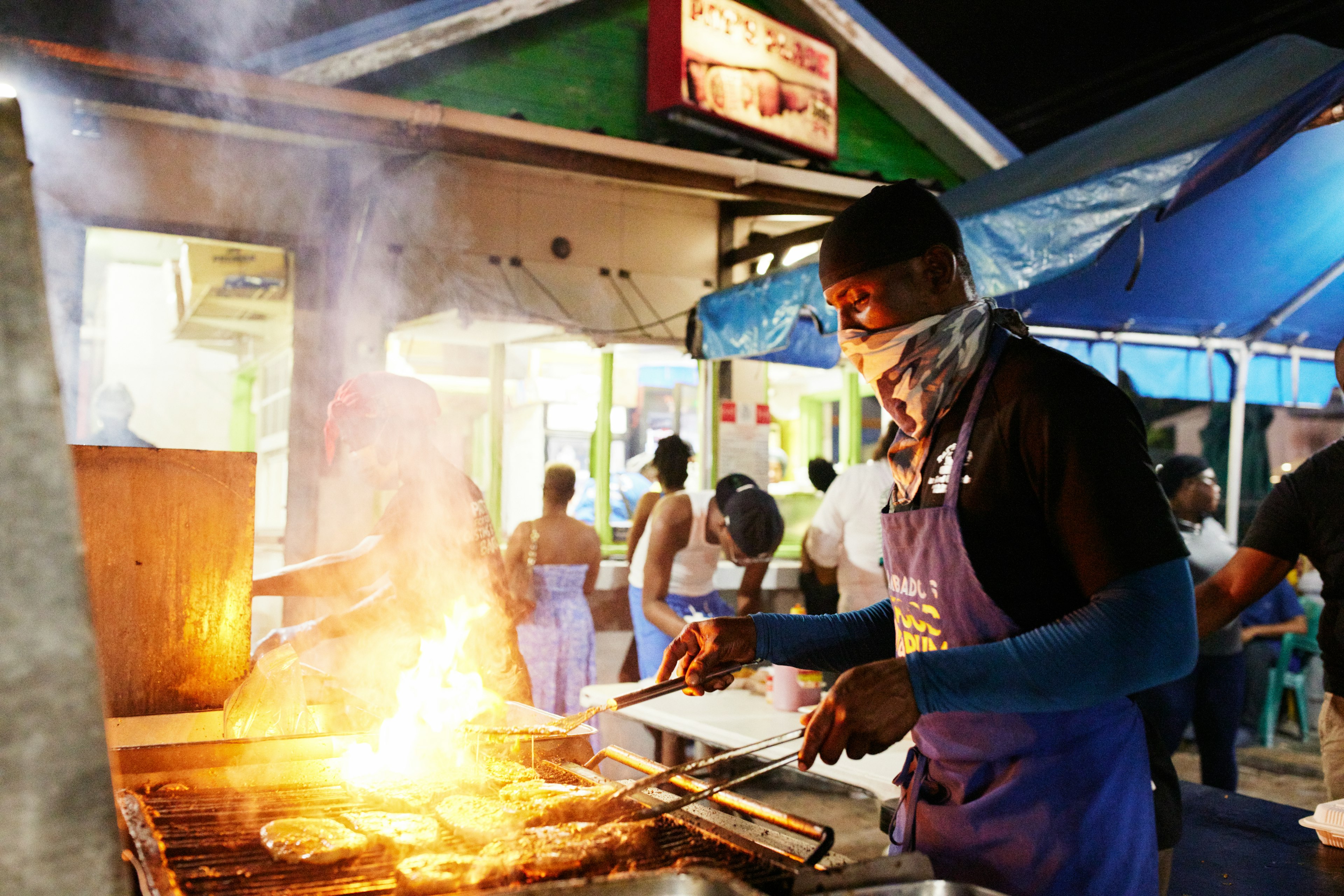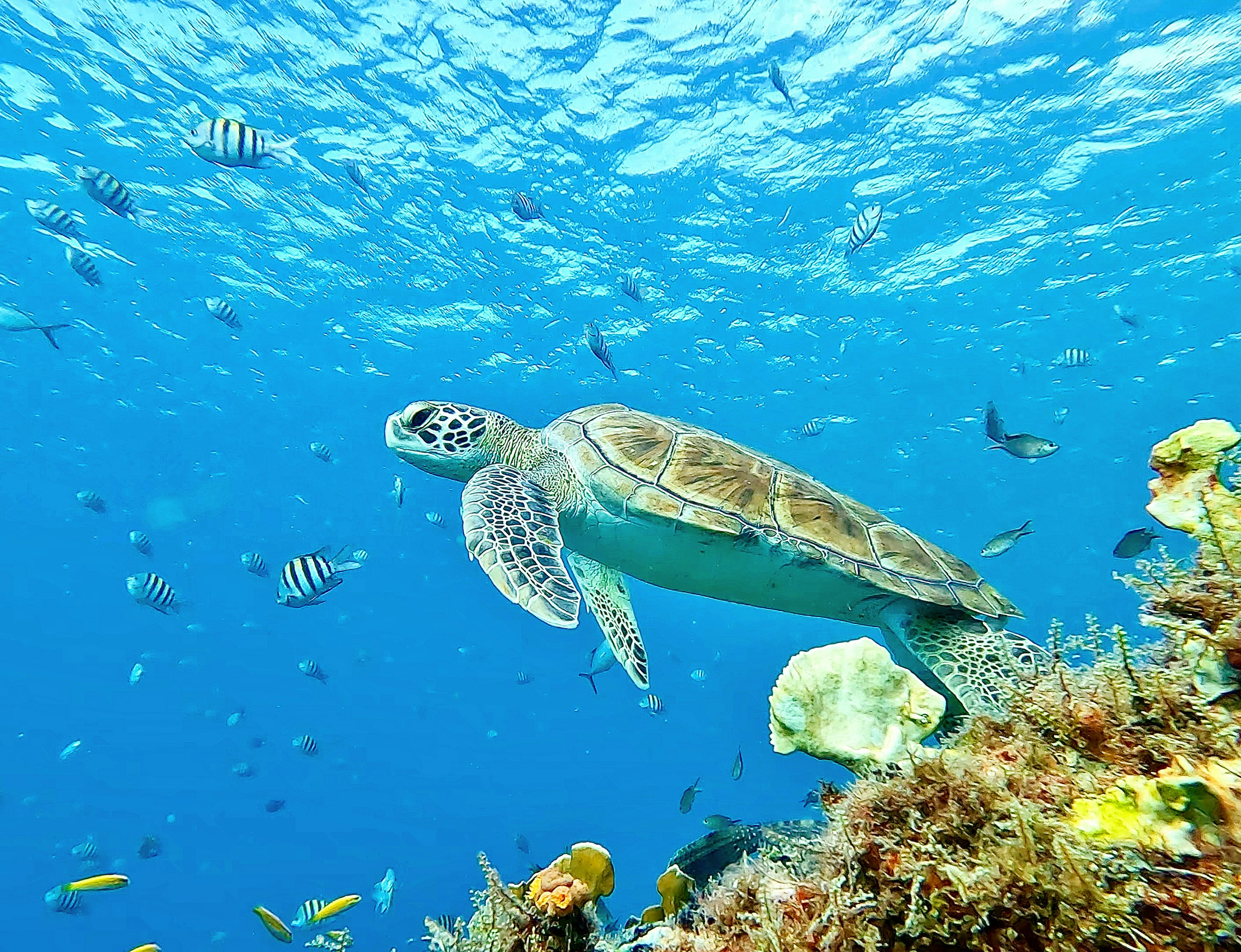Deseando evadir la rutina diaria con un idílico viaje romántico?
Hemos explorado todo EE.UU. y seleccionado 14 escapadas de fin de semana que satisfacen a parejas de todos los gustos. Desde montañas hasta playas, ciudades hasta pueblos pequeños, vastos parques nacionales y épicos paseos por la costa oeste, aquí están los destinos más románticos para las mejores vacaciones en pareja en EE.UU.

1. Big Sur, California
Ideal para parejas apasionadas por la carretera abierta
Disfruten de momentos especiales con asombrosas vistas en uno de los viajes por carretera más celebrados del país. La parte salvaje de la Hwy 1 de Big Sur combina paisajes incomparables con playas escondidas y oportunidades para hacer senderismo, relajantes aguas termales y excelentes opciones gastronómicas. Esta pintoresca carretera es la elección perfecta para una pareja que busca conectar con la naturaleza, sin renunciar al confort.
Además, el recorrido mejora siendo dos: si se turnan, ambos tendrán la oportunidad de admirar el paisaje desde la ventana y de conducir. (Solo asegúrate de verificar tu ruta antes de partir, ya que deslizamientos de tierra, inundaciones, incendios forestales y accidentes de tráfico pueden causar cierres.)
Comienza al norte de Big Sur en Carmel-by-the-Sea. Tómate el tiempo para explorar un pueblo famoso por su encanto artístico, desde sus galerías y tiendas hasta su misión del siglo XVIII. En tu camino hacia el sur, detente en el Parque Estatal Point Lobos para observar a los leones marinos jugueteando en la costa, y haz una pausa cerca del muy fotografiable Puente Bixby para tomar unas fotos.

2. Key Biscayne, Florida
Ideal para parejas que buscan el sol
A menos de 10 millas del centro, Key Biscayne no es técnicamente parte de Miami. Sin embargo, está tan cerca y es tan continuo con la ciudad que podría considerarse un barrio periférico – si no se sintiera tan diferente. Desde rascacielos y clubes de escena hasta playas tranquilas de arena blanca, calles aptas para ciclistas y abundancia de deportes acuáticos, esta isla barrera asegura alejarte a ti y a tu pareja del bullicio urbano.
Entre su faro del siglo XIX – la estructura más antigua en pie de toda Florida – y su playa natural de 1.25 millas, el Parque Estatal Bill Baggs Cape Florida es una visita obligada. Las parejas pueden recargar energías juntas bajo una sombrilla o remar en un kayak para dos en las olas del océano. Si llegas por mar, dirígete a Boater’s Grill, donde puedes atracar en No Name Harbor y disfrutar de frituras de bacalao y pargo fresco.
El Rusty Pelican es otra institución local que sigue en pie después de más de medio siglo. Reserva una mesa para un brunch o planifica tu visita al atardecer para disfrutar la espléndida ubicación junto al mar en Rickenbacker Marina.

3. Región de Monadnock, New Hampshire
Mejor para parejas amantes de los pueblos pequeños
El suroeste de New Hampshire está salpicado de localidades históricas que destilan encanto y ofrecen un telón de fondo para un recorrido romántico. Haz un fin de semana explorando las carreteras secundarias y avanzando de aldea en aldea, con una iglesia de torre blanca y un verde municipal a la vez.
Harrisville, con una población de 953, tiene un magnífico complejo de molinos de ladrillo rojo que en su día se movía por una cascada cercana; hoy es el hogar de la tienda de tejidos Harrisville Designs. Después de pasear por la aldea (no tomará mucho tiempo), detente para almorzar en el precioso Harrisville General Store. Cerca, Hancock (población 1654) tiene una de las calles principales más bellas, flanqueada por viviendas históricas con grandes porches y cercas blancas; la emblemática Hancock Inn, que data de 1789, tiene programado reabrir en 2024.
Peterborough (en esta región, una pequeña ciudad – de 6284 personas) es el centro artístico regional, con calles llenas de galerías, pequeños museos y tiendas originales. (También es una musa creativa por sí misma, supuestamente siendo la inspiración para Grover’s Corners en “Our Town” de Thornton Wilder.)
No hace falta circular mucho para divisar el macizo que le da nombre al área. Si deseas un poco de ejercicio después de tanto tiempo en el coche, el Monadnock, una de las montañas más escaladas del mundo, ofrece una caminata moderada con una recompensa considerable. Disfruta de las vistas de 360° desde su cima rocosa de 3165 pies, que en días despejados se extienden hasta Boston.

4. Williamsburg, Ciudad de Nueva York
Mejor para parejas gourmet
Incluso en la escena sobresaliente de restaurantes de Nueva York, el norte de Brooklyn destaca por su opulencia culinaria. Al situarte en Williamsburg, estarás en el centro de la acción.
Si buscas una cita divertida con cha siu “McRibs” y “martinis con MSG” o un brunch de la mañana siguiente de tostadas francesas de huevo salado, Bonnie’s cantonés-americano es muy popular. En el sur de Williamsburg, Aldama ofrece versiones elevadas de la comida callejera del centro de México. Cerca de la BQE, La sala de comedor con luz tenue de Llama Inn crea un ambiente romántico con sus hermosos platillos peruanos.
En el borde norte del barrio, KRU presenta giros modernos en clásicos de la cocina tailandesa en un entorno de estilo industrial y boticario. Para un bocado informal, Taqueria Ramírez ofrece tacos carnosos al estilo Ciudad de México desde un local revestido de azulejos en Greenpoint. Prepárate para hacer fila por tu tripa, campechano, longaniza, suadero y al pastor los fines de semana.

5. Parque Nacional Joshua Tree, California
Ideal para parejas aventureras
Dos ecosistemas desérticos diferenciados en el Parque Nacional Joshua Tree brindan innumerables posibilidades para conectarse en el aire libre – considera flores silvestres primaverales, diversidad de fauna, impresionantes puestas de sol y observación de estrellas épica. Para quienes prefieren caminar tomados de la mano, hay caminatas cortas y senderos naturales, y para los más intensos, hay recorridos más exigentes – además de ciclismo, mochilero y escalada – si prefieres sudar un poco. (Sea cual sea tu manera de explorar, lleva más agua de la que piensas que necesitarás en este lugar seco, cálido y hermoso).
Cámpers están disponibles en el lugar – pero alquilar alojamientos románticos en las cercanías eleva la experiencia. A apenas 10 millas del acceso al parque, el Santuario de Cascada Trails Mustang proporciona cinco tiendas glamping complementado con actividades equinas, como excursiones al atardecer y paseos de observación de estrellas privados (reservables incluso si no pasas la noche).
Refréscate en la piscina climatizada, después acurrúcate en un lujoso remolque Airstream en AutoCamp Joshua Tree. O, sumérgete en el spa mineral y piscina del Mi Kasa Hot Springs, que es exclusivo para adultos, tolerante al cannabis y con opción de vestir opcional. ¿Celebrando un evento especial? Examina los listados de Plum Guide para encontrar la morada moderna y privada perfecta.

6. Santa Fe, Nuevo México
Ideal para parejas que disfrutan mezclando lo antiguo y lo moderno
Santa Fe, una ciudad establecida por los españoles hace más de cuatro siglos, es hoy en día un centro de innovación artística. Reglamentos de urbanismo estrictos exigen el uso del adobe en todas las construcciones (¡incluso gasolineras!), otorgándole a Santa Fe su característica apariencia de tonos tierra y sensación de armonía y continuidad arquitectónica. Aun así, detrás de esas paredes de tierra, se esconden explosiones de color e imaginación.
Tanto en los alrededores de la Plaza histórica como un poco más allá, museos de renombre mundial presentan pinturas de la famosa residente Georgia O’Keeffe, además de nuevas obras de artistas indígenas locales. Un poco más afuera, el Museo Internacional de Arte Popular está repleto de una variedad que va desde máscaras pintadas brillantes hasta muñecas talladas y joyas engarzadas, y mucho más (la colección más grande de su tipo en el mundo).
Sin embargo, ningún lugar encarna mejor la vibración de inventiva desenfadada de Santa Fe que Meow Wolf. Un colectivo artístico ha transformado un antiguo boliche (donado por otro creador de Santa Fe, George RR Martin, de ‘Game of Thrones’) en un mundo maravillosamente inmersivo. La atracción incluye luces psicodélicas, pasadizos ocultos y una narrativa enigmática que guía a los visitantes a través de todo el caos. En lugar de dar un paso en la historia, aquí te sentirás como si hubieras entrado en otra dimensión.

7. Aspen, Colorado
Meilleur pour les couples grands dépensiers
Aspen huppé est un repaire légendaire des célébrités, notamment durant les mois d’hiver. La neige parfaite, les propriétés immobilières stupéfiantes et les choix culinaires impeccables attirent continuellement une foule d’élites – ainsi que des prix élevés. Cependant, ce n’est pas seulement les jours de neige : avec le vélo, la randonnée et les événements culturels durant les autres saisons de l’année, c’est une destination véritablement quatre saisons. Préparer un week-end économique ici serait difficile, mais c’est un endroit idéal pour se lâcher.
Si vous êtes l’autre genre de couple grands dépensiers, il y a également beaucoup pour vous. Comme le reste du Colorado, Aspen possède un éventail de dispensaires de marijuana récréative et médicale. Silverpeak Dispensary est une boutique haut de gamme qui expose son cannabis biologique sous vitrines personnalisées, entourées de bois riche et de lumière naturelle. Le détaillant chic offre une large sélection de produits allant des fleurs et des comestibles aux concentrés et accessoires.

8. Rogers Park, Chicago
Idéal pour les couples orientés vers la culture
Hyde Park et Bucktown–Wicker Park sont des quartiers renommés pour leur architecture et leur style avant-gardiste inspiré par les arts. Mais pour côtoyer une foule jeune de créatifs diversifiés, la communauté de Rogers Park, située à Far North Side, est l’endroit à fréquenter. Plus de 60 langues y sont parlées et il y a trop de cuisines à compter – de la cuisine caribéenne à mexicaine, en passant par éthiopienne et japonaise.
En journée, explorez le Mile of Murals sur Glenwood Ave et flânez dans les galeries et studios du Glenwood Arts District. Passez par le Leather Archives & Museum pour un aperçu de l’histoire et de la culture du cuir, du fétichisme, et du BDSM.
Le soir, assistez à des œuvres originales au Factory Theater, des musiques du monde et des magiciens chez Rhapsody et des récits de communautés sous-représentées – exprimés par le combat scénique ! – chez Babes With Blades. Puis, prenez un dernier verre au romantique Le Piano, un bar et espace de performance intime centré autour d’un – oui – piano à queue.

9. Washington, Virginie
Ideal for couples who adore history
Situated roughly a 90-minute drive west from DC, in the picturesque Shenandoah Valley, is the nation’s original Washington, settled under the shadow of the Blue Ridge Mountains. Anticipate a charming small town known for its world-famous lodgings.
The Inn at Little Washington, a Relais & Châteaux property, boasts the DC metro area’s sole three-Michelin-star eatery. Revered for its tasting menus, you might just encounter notable figures from the other Washington dining at the adjacent table. (You might remember its innovative strategy for filling the dining room post-lockdown).
You’ll find plenty of pleasures without venturing far in this quaint village. Sip on locally crafted wine at Gadino Cellars or the Little Washington Winery, and wander through the town’s stores and galleries. Venture below ground to admire the vast caverns of the eastern US. Additionally, paddle along the Shenandoah River, drive south to Skyline Dr, and explore the rest of the nearby Shenandoah National Park, whether on foot or bike.

10. San Juan, Puerto Rico
Ideal for couples in the LGBTIQ+ community
San Juan stands as one of the most welcoming spots within Puerto Rico and across the Caribbean for LGBTIQ+ voyagers, offering a warm-weather haven with neighborhoods, lodgings, nightlife, and dining spots that all embrace diversity. To keep the energy high, there’s a Queer Filmfest in May followed by an impressive Pride party in June, all doable with just a quick flight from most major East Coast cities.
You and your special someone can explore either of the two unofficial gay beaches, and then gear up for an evening of excitement at one of the capital’s vibrant LGBTIQ+ venues. Witness a thrilling drag performance at Kweens Klub, dance the night away at La Placita, sip on affordable yet potent drinks at Tía Maria’s Liquor Store or forge new friendships at La Sombrilla Rosa.
In the mood for a delightful dining experience? Indulge in grilled lobster and libations served in coconuts at the gay-owned Ostra Cosa, or head over to Jose Santaella’s gay-friendly namesake for modern Puerto Rican cuisine in a chic setting.
Regarding places to stay, Coqui del Mar is a gay-owned guesthouse for adults only in Ocean Park, offering a clothing-optional pool and ground-floor suites with two-person walk-in showers. There are organized group trips to explore the rainforest and the island’s stunning white-sand beaches. Another option is the all-vegetarian, gay-owned boutique Dreamcatcher, also situated in Ocean Park, while the adults-only Condado Ocean Club boasts a beachfront view in the vibrant Condado area.
11. Asheville, North Carolina
Ideal for financially savvy couples
Tucked away in North Carolina’s mountains, Asheville offers easy access, beautiful landscapes, numerous activities, and a laid-back, artsy feel, making it one of the most appealing weekend retreats on the East Coast. Despite its fame, it continues to charm with its unique character and affordability, providing a romantic getaway that won’t dent your wallet.
Immerse yourselves in the splendor of Pisgah National Forest, where you can spend the day amidst hardwood trees, rushing rivers, and cascading waterfalls. Slip into your swimwear for a thrilling ride on a 60-foot natural waterslide at Sliding Rock or experience a virtual helicopter flight at the Cradle of Forestry. Just a couple of miles from downtown, the Asheville Botanical Gardens offers a serene spot for an afternoon amble. Admission and parking won’t cost you a thing, with guests welcome daily from dawn till dusk.
Downtown Asheville brims with affordable or no-cost activities for couples, from wandering through farmers markets and enjoying live performances, to exploring quirky museums and appreciating vibrant public art. Take advantage of the free ArtsAVL Trolley to explore art from Downtown to the River Arts District. In the River Arts area, you can savor made-to-order Hole Doughnuts and see what New Belgium Brewing has on offer.
Sidenote: Spend a day wandering the vast expanse of Biltmore Estate, a grand French Renaissance château showcasing opulent gardens, more than 20 miles of trails, and a celebrated winery.
12. Cape Cod, Massachusetts
Perfect for the laid-back, tranquil couple
Renowned for its seaside allure and natural charm, Cape Cod offers an ideal escape for couples seeking a peaceful retreat. Here, there’s an array of activities, from exploring historic lighthouses and tasting fresh seafood to leisurely walks along expansive sandy shores.
Make your way to Provincetown, located at the northern tip of the curve-shaped peninsula, for a relaxing hideaway. Nearby, Cape Cod National Seashore provides 40 miles of untouched coastline, salt marshes, and forest paths to explore whether by foot, bike, or boat. From May through October, partake in a whale-watching excursion to glimpse magnificent marine creatures. Conclude your day by marveling at some of the world’s most stunning sunsets along Cape Cod Bay.
Cape Cod is a treasure trove for history aficionados, from pilgrims to pirates and America’s oldest professional summer theater. The Pilgrim Monument and Provincetown Museum revive the area’s captivating history, and those who make it to the summit are rewarded with awe-inspiring views.
Para aquellos que se preguntan dónde proponer en Cape Cod, Truro Vineyards, los Acantilados de Aquinnah en Martha’s Vineyard y Nauset Light Beach ofrecen pintorescos escenarios para hacer la pregunta.
13. Park City, Utah
Ideal para la pareja que busca la nieve
Park City es el destino romántico por excelencia para parejas que disfrutan jugar en la nieve y acurrucarse junto al hogar rodeados de impresionantes paisajes montañosos. Escondido entre los Montes Wasatch cerca de Salt Lake City, este encantador pueblo montañés brinda una mezcla especial de belleza natural, interesante historia, vibrante cultura y aventuras al aire libre durante todo el año. Aunque hay mucho por hacer en cualquier temporada, este destino cubierto de nieve realmente brilla en invierno.
Anteriormente un pueblo minero de plata, Main Street conserva su carácter distintivo con tiendas boutique, festivales animados y bares y restaurantes innovadores. Esquí, snowboard y tubing en la nieve son las principales atracciones aquí, con tres complejos turísticos de clase mundial para explorar. Los entusiastas de los deportes de nieve pueden avistar frecuentemente al equipo de esquí de EE.UU. practicando en el Parque Olímpico de Utah, sede de los eventos de invierno de 2002. Mientras estés en el lugar, recorre la historia local del esquí en el Museo de Esquí Alf Engen.
En el exclusivo Deer Valley, encontrarás alojamientos lujosos con spas en el sitio, experiencias gastronómicas de alta categoría y acceso directo de esquí al principal resort de esquí del país. Sube en el funicular hasta la terraza del St. Regis para el ritual del sable de champán al atardecer.
14. Castle Hot Springs, Arizona
Ideal para la pareja todo incluido
En el corazón del Desierto de Sonora en Arizona, el galardonado Castle Hot Springs es un oasis privado para parejas. Situado aproximadamente a una hora al norte de Phoenix, este resort todo incluido está diseñado para que los huéspedes experimenten una relajación total. Con únicamente 34 habitaciones, la íntima propiedad boutique nunca parece estar abarrotada.
Una estancia aquí incluye todas las comidas y propinas, un crédito para bebidas de $25 por noche, varias de las actividades en el lugar y acceso a los manantiales termales naturales de tres niveles. Los huéspedes pueden participar en caminatas guiadas y recorridos por la granja, explorar el resort en bicicletas cruiser y relajarse con clases de yoga y meditación. Los servicios de masaje, paseos a caballo y actividades de aventura como el emocionante vía ferrata están disponibles por un costo adicional.
Aunque el WiFi es accesible en todo el resort, el servicio de celular es limitado, incentivando a las parejas a conectarse más intensamente. Dedica unas horas a disfrutar de los manantiales termales juntos, aprovechando los beneficios de sus aguas ricas en minerales. El encantador patio de Bar 1896 es un lugar ideal para una buena conversación con tu pareja mientras disfrutan de cócteles y cócteles sin alcohol especiales.
Preguntas Frecuentes
¿Cuál es el mejor lugar para una escapada en pareja en los EE.UU.?
Estados Unidos está lleno de ciudades románticas para todo tipo de parejas. El mejor destino para tu escapada depende de tus intereses, ubicación, tiempo disponible y presupuesto de viaje. Tu destino ideal debería ofrecer actividades que ambos disfruten con oportunidades para conversar y conectarse. Busca destinos con paisajes pintorescos, alojamientos acogedores, numerosas opciones gastronómicas y atracciones interesantes.
¿Qué deben buscar las parejas en un alojamiento para una escapada romántica?
Ya sea un pequeño bed and breakfast, un hotel boutique o un resort todo incluido, las instalaciones pueden establecer el tono de unas vacaciones románticas. Busca un lugar con ambientes acogedores, vistas pintorescas o atracciones únicas para hacer tu estancia más memorable. Asegúrate de considerar el nivel de privacidad, el ambiente y la oportunidad de añadir sorpresas especiales al seleccionar alojamientos.
¿Cuáles son buenas actividades para parejas durante un viaje romántico?
Las mejores actividades para parejas son aquellas que los acercan ya sea mediante conversaciones profundas o nuevas experiencias. Las ideas de vacaciones para parejas deben atraer a ambos y fomentar la intimidad y la conexión. Una cena para dos, un día de spa o un masaje en pareja y atardeceres en la playa son clásicos. Las parejas activas podrían preferir un paseo en bicicleta por un sendero escénico o una caminata hasta un mirador en la montaña. Tomar clases de cocina o coctelería, catas de vino, visitar galerías de arte y museos promueven la unión e inspiran conversación. No importa lo que decidas hacer, reserva tiempo para relajarte y ser espontáneo.
¿Cuál es el mejor lugar para un viaje en pareja con presupuesto limitado?
Si los viajes de lujo no están dentro del presupuesto, las parejas aún pueden disfrutar de experiencias memorables con escapadas románticas asequibles en EE.UU. Destinos económicos para parejas se pueden encontrar por todo el país, desde Sedona hasta el Medio Oeste, Savannah a Asheville e incluso viajes románticos a Florida.
Viajar durante la temporada baja, cocinar tus propias comidas y buscar actividades gratuitas puede liberar recursos financieros para atracciones imperdibles o experiencias especiales.
¿Dónde están los mejores lugares para que visiten parejas aventureras?
Mientras el oeste es conocido por sus destinos accidentados y recreación al aire libre, las parejas en busca de adrenalina pueden disfrutar de viajes románticos aventureros por todo el país. Los surfistas sueñan con atrapar olas en Hawái, mientras que los ciclistas adoran Moab, Utah. Fayetteville, WV es un destino principal para el salto BASE y rafting en aguas bravas. No importa qué tipo de actividades emocionantes busques, los Parques Nacionales de América presentan oportunidades para la aventura en los Estados Unidos.









